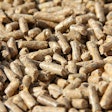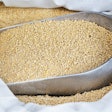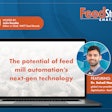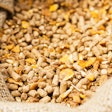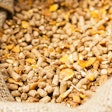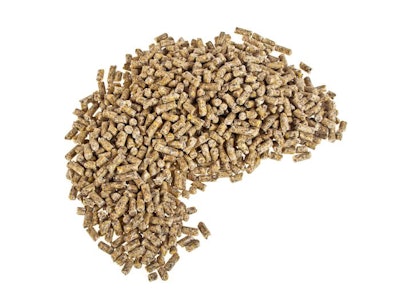
Data collection, traceability added benefits of automated systems in feed mills
As a second-generation owner of Easy Automation, a supplier of equipment for feed mills and fertilizer blenders, Brady Gaalswyk is passionate about his company’s role in global food systems.
“It’s a salt-of-the-Earth industry, feeding the world,” he says.
But as part of the rising generation, he also believes the industry will need to make rapid changes in the years to come to keep up with inflation, labor shortages, and shifts in consumer demand.
“There are lot of great things about the feed industry,” he says. “But we can’t do this for 40 more years. We’re not going to stand flat-footed.”
While there are certainly facilities that push the limits of what’s possible with current technology, feed mills have generally lagged behind other industries when it comes to automation and data collection, Gaalswyk says. However, he and other experts see this trend changing over the next several years — automation is a clear answer to difficult labor markets and, on top of this, may help attract younger workers interested in technology to the industry.
“I’m always careful, but automation is not really replacing humans,” says Scott Braun, director of engineering at WEM Automation. “But in the age of having labor shortages, there’s a good place for automation.”
Automation is an investment in the future
Outside necessities created by government mandates, such as tracking antibiotic use and inclusion, feed mills haven’t been as ready to adopt new technologies as, say, food processors. The emphasis in animal feed remains keeping costs as low as possible for their customers — animal producers who often contend with thin margins.
“The view is, there’s a fairly steep cost to update automation and go to a system that’s more data rich — there’s certainly a question of, am I going to get a return on my investment,” Braun says. “I think a lot of feed mills are really careful about investing their money.
But the increased cost of labor, he says, has begun to change that in more recent years. Talent was already difficult to come by for feed mills, possibly because they tend to be located in rural areas where workers are scarce. So as competition for labor has increased, mills are increasingly looking for ways automation can help reduce labor costs.
In one recent example, Braun says, WEM assisted with the installation of automated microbins to dispense specialty feed ingredients while feed is processed. Previously, he says, the mill had relied on human labor to find, retrieve and open these ingredients.
“We did a major upgrade to, essentially, take away a dirty, dusty job that no one wanted to do,” Braun says. “They made a big investment because it’s hard to find people.”
The pandemic, in addition to accelerating retirements and shrinking the overall workforce, may have also made new funds available for feed processors to invest in upgrading their mills, according to Chad Brenton, engineering manager for CPM Beta Raven.
“Because more and more people are cooking at home, there’s more demand for protein,” which has increased demand at all levels of the animal production industry, Brenton says. “Here at CPM Beta Raven, we’ve hired 12 people in the last eight months because customers are wanting more and more projects done.”
Perks of data collection
With more automation, Gaalswyk says, comes more opportunity to collect data on a mill’s processes. And, in general, this data fits into one of two categories — mechanics-related data such as how often or how long a motor runs, and data related to the content of the product, such as how much of an ingredient was used, and when. Both kinds of data can prove useful to feed mill operators, and can help reduce costs in the long-term.
“For example, we can track every time a motor ran in that facility,” Gaalswyk says. “If it turned on for a quarter of a second or three hours, we can tell you how long it ran for.”
Without automatic data collection, Braun says, feed mill maintenance schedules are often based on run time estimates. More data can enable more precise maintenance — for example, a computer system might trigger maintenance based on a record of how much material went through a pellet die, rather than how many hours have elapsed.
Collecting data on mechanical systems can also help prevent accidents by detecting equipment damage, spills or even dust that may be creating an explosion hazard. Adding bearing temperature monitors, for example, may even allow a computer to automatically shut down equipment before an accident occurs, Braun says.
Tracking ingredients, Gaalswyk says, can similarly prevent issues with human error and contamination — potentially enabling mill operators to know exactly which products could be impacted by tracking every piece of equipment a product touched.
“It’s the ability to see where a problem went wrong without guessing,” Brenton says. “About two years ago, we had a customer where the operator put the system in manual and then accidentally gave a triple dose of a drug that went to chickens, and essentially killed 10,000 chickens. It took weeks to figure out what went wrong, where with data collection it could have happened right away and even stopped it from being shipped.”
The potential to reduce errors — and the financial losses — is generally a well-known benefit of automation and data collection, Brenton says. However, feed mills stand to realize significant savings as a result of data-driven increases in efficiencies as well.
“Let’s take corn, for example. Most recipes can tolerate 5 to 10% variation” in the inclusion of corn, Brenton says. “But the more accurate you are, the more money you realize you’re saving with that accuracy. Even moving to 1% variation from 5% on a one-ton batch is quite a bit of savings.”
The same is true on the mechanical side, Gaalswyk says, where data can help managers find bottlenecks and reduce energy use.
“A lot of facility managers know their facility super well, and they’re very knowledgeable,” he says. “But they don’t know what, in a perfect world, their facility could do.”
Data collection can also help feed producers unlock new potential revenue streams, Gaalswyk says, by helping them improve their ingredient traceability to offer product lines to higher-paying markets looking for certified organic, local and sustainable food products.
Traceability benefits
Traceability, alongside potential advances in formulation, remains one of the areas where technology has yet to catch up with consumer demand, Gaalswyk says. While automated sensors can easily track where an ingredient went within a mill, finding out what happened before it arrived and after it left the facility is a different story.
“We are running in silos, quite literally,” he says. “We do a good job of locking it down when it’s in our control, but when we had it off, it’s not to the same level.”
Within the feed mill, Brenton says, the industry could also benefit from technologies that aren’t yet mature. One area of need, he says, is for reliable moisture sensors that can detect changes in specific feed ingredients such as alfalfa. If sensors could accurately detect how dry or saturated an ingredient is, it could go a long way toward preventing down time caused by wet feed clogging up the system.
There’s also a growing emphasis, Brenton continues, on the need for data security in light of growing reliance on cloud storage and several ransomware attacks on major companies within the industry.
“Any time we start talking about networks and computer hardware, it’s on the front of everyone’s mind right now,” Brenton says. “People are realizing their vulnerabilities.”
But if the industry is beginning to realize the risks, they’re also starting to see the possibilities that come with connecting more devices to the internet — and each other.
“To me, what’s most exciting is that control devices continue to get smarter and smarter — which allows us to look at data differently and draw conclusions that we couldn’t before,” Braun says.
Announcing the Feed Mill of the Future digital supplement
WATT’s feed brand’s Feed Strategy and Feed & Grain magazines join forces to launch the monthly Feed Mill of the Future digital supplement. Each edition aims to provide animal feed industry stakeholders with forward-looking content, market insights and a spotlight on the leading-edge technologies shaping the global feed industry of tomorrow.
Subscribe today! https://bit.ly/3dWzow7





